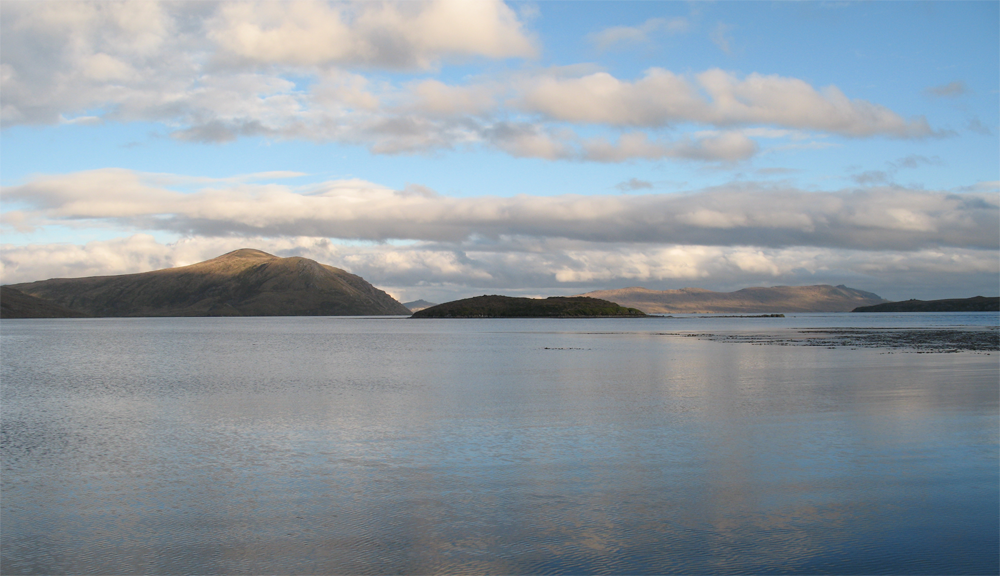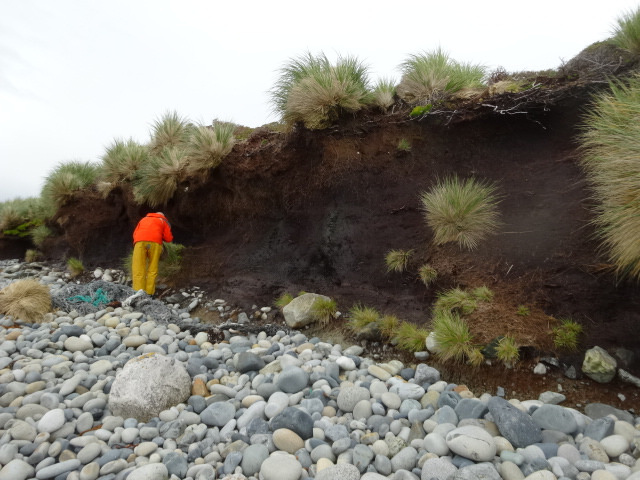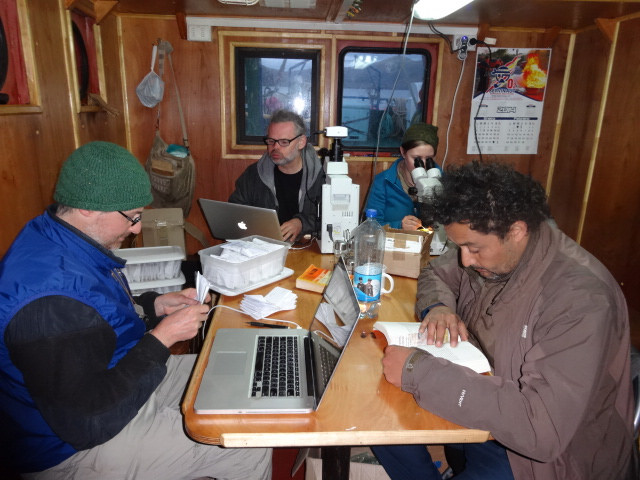From the Field: Bill Buck in Cape Horn 2014, Part 9
Posted in Travelogue on April 18, 2014 by Bill Buck
William R. Buck, Ph.D., is the Mary Flagler Cary Curator of Botany at The New York Botanical Garden. Every January for the last three years, Dr. Buck, a moss specialist, and a team of colleagues have journeyed to the Cape Horn region at the southern tip of South America to document the area’s rich diversity of mosses and search for new species.
January 20, 2014; Puerto Maxwell, Isla Hermite, Chile (55°48’S, 67°32’W)

Last night we stayed at Caleta de Los Ríos on the south coast of Isla Wollaston (55°47.5’S, 67°20.5’W). To sea novices like us, it didn’t appear any better than Caleta St. Martin, which we had just left behind. This is why we hire an experienced crew. By the time we reached port, the wind had picked up considerably. We tied up next to another fishing boat that was already in the harbor. The ships’ crews knew each other and promptly went visiting.
The wind continued. I couldn’t be sure without an anemometer, but from growing up in Florida I believed we were experiencing hurricane-force winds of over 75 mph. Then the rain started, blowing in horizontal sheets. I was mesmerized by the force of it all, and despite dropping temperatures I couldn’t bring myself to go inside.
As exhilarating as this show of nature was, I knew we wouldn’t be able to collect if it kept up through the next day. Out in the channel beyond our sheltered harbor, the water was gray and angry. I started chanting to myself, “Calma, calma, calma.” The wind talks to us in so many voices, from the rustling of leaves to the howling winds, that it seemed only reasonable to talk back.
At 5 a.m. the next morning, the sky was a pale, cloudy gray, but the wind had nearly stopped. I thanked it for its cooperation. By 8 a.m. I was dressed and headed up for breakfast on the otherwise quiet ship.
This was the latest I’d seen the crew sleep, meaning a late start to the day. It was 11 a.m. by the time we returned to Isla Hermite for the day’s collecting in Caleta Davanzo (55°50’S, 67°34’W). Ernesto Davis, our facilitator, agreed to speak to the captain about moving to each day’s first collecting site before breakfast, allowing more time in the field.
From the ship’s deck, there appeared to be a small lake at the base of a mountain (Pico Foster), so I decided to work toward it. The landscape was predominantly Magellanic tundra but with groves of stunted trees, each no more than two or three feet tall, whose canopy was essentially continuous with the tundra. Barbara Murray, well-accustomed to the arctic tundra, was surprised at how uneven this landscape was compared to its arctic counterpart. Walking on top of the low canopy meant one foot was always falling through as the other balanced on branches.

After such an effort, it was unfortunate to find the lake shore had no rocks. Had they been there, they might have harbored interesting mosses. I worked my way back through the dense gallery forest along the lake’s outlet stream toward the sea. With all the intertwined branches, these small patches of forest seemed almost enchanted. However, the most interesting collections came from the exposed black humus along the coast.
The first moss I found was Leptodontium proliferum, a small species in the Pottiaceae family with abundant, pale-green gemmae on its leaf tips. I found this last year on Isla Allen Gardiner, just off Isla Lennox, though I am glad to have a second population for the flora area. The second species I collected is more of a mystery. Without a compound microscope I can’t tell if it belongs to the genus Entosthodon or Hennediella. Time will tell.
By 2 p.m. I was hungry and began working my way back to the beach. Coastal composition here varies greatly. This beach consisted of a series of round stones, ranging from the size of chicken eggs to bowling balls. The unstable stones made for slow, careful walking.

After lunch, we headed to another site on Isla Hermite—Puerto Maxwell. Because I had previously collected here, I decided to stay aboard the ship. As always, my priority was to get my newest collections onto the dryer. More selfishly, I also wanted to take a hot shower before the group returned. Then I needed to catch up on this expedition journal. Now that we are in our target area, things are happening quickly.
This port is wide open and not adequate for spending the night, meaning we still need to move before securing the ship.
Past Expedition Entries:
Photos provided by Barbara Murray and Barbara Andreas.

